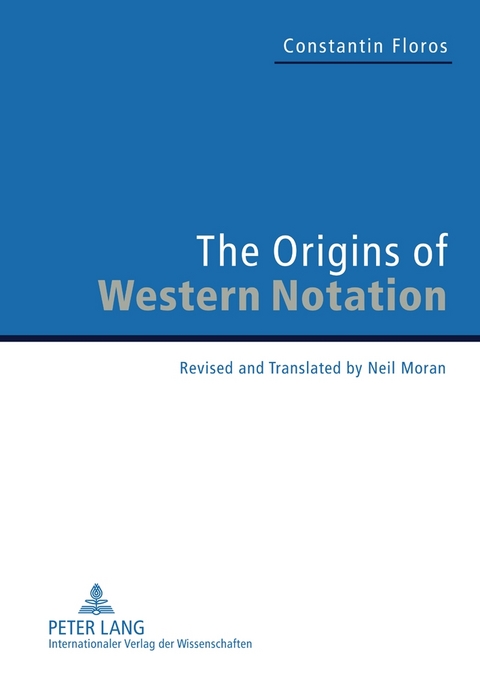The Origins of Western Notation
Peter Lang Gmbh, Internationaler Verlag Der Wissenschaften
978-3-631-61559-1 (ISBN)
Constantin Floros is a professor emeritus of musicology at the University of Hamburg and a prolific writer on diverse subjects. He was the first researcher who systematically examined, compared and decoded the oldest Byzantine, Slavic and Latin neumatic notations. Neil K. Moran is the author of numerous studies on European cultural history in Antiquity and the Middle Ages. His books are of fundamental importance for those interested in the Ordinary chants of the Byzantine rite and for the iconography of church singers in the Middle Ages.
Contents: The Relationship between Byzantine and Latin Neumes - Classification of the Latin Neumes - Neumae Simplices, compositae, ornamental, semivocales - Litterae significativae - Names - The Origin of Latin chant Notation - Latin Dodekaechos.
«(Floros') work, while not giving the last word in the domain of semiology, could today certainly again be the point of departure for productive developments, both in the domain of Byzantine music as well as in the area of Gregorian chant.» (Luca Basilio Ricossa)
«(Floros’) work, while not giving the last word in the domain of semiology, could today certainly again be the point of departure for productive developments, both in the domain of Byzantine music as well as in the area of Gregorian chant.» (Luca Basilio Ricossa)
| Erscheint lt. Verlag | 31.3.2011 |
|---|---|
| Verlagsort | Frankfurt a.M. |
| Sprache | englisch |
| Maße | 148 x 210 mm |
| Gewicht | 640 g |
| Themenwelt | Kunst / Musik / Theater ► Musik ► Musikgeschichte |
| Geschichte ► Allgemeine Geschichte ► Mittelalter | |
| Geisteswissenschaften ► Religion / Theologie ► Christentum | |
| Geisteswissenschaften ► Sprach- / Literaturwissenschaft ► Literaturwissenschaft | |
| Schlagworte | 1970 • 2010» • Byzantinisches Reich • Constantin • Floros • Mittelalterliche Kirchengeschichte • Moran • Neil • Neumenkunde • Neumenkunde» • Neumenkunde< • Notation • Notationen • Origins • Reception • report • Revised • Tonartenlehre • translated • «Universale • Universale • Western • with |
| ISBN-10 | 3-631-61559-0 / 3631615590 |
| ISBN-13 | 978-3-631-61559-1 / 9783631615591 |
| Zustand | Neuware |
| Haben Sie eine Frage zum Produkt? |
aus dem Bereich




